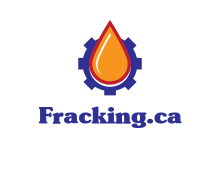
Additionally, gels, foams, and compressed gases, including nitrogen, carbon dioxide and air can be injected. Various types of proppant include silica sand, resin-coated sand, and man-made ceramics. These vary depending on the type of permeability or grain strength needed. Sand containing naturally radioactive minerals is sometimes used so that the fracture trace along the wellbore can be measured. Chemical additives are applied to tailor the injected material to the specific geological situation, protect the well, and improve its operation, though the injected fluid is approximately 99 percent water and 1 percent proppant, varying slightly based on the type of well.
The composition of injected fluid is changed during the operation of a well over time, that is initially acid is used to increase permeability, then proppants are used with a gradual increase in their size and/or density, and at the end the well is flushed with water under pressure.
Injected fluid is to some degree recovered and stored in pits or containers; it can be toxic due to the chemical additives and material washed out from the ground. It is sometimes processed so that part of it can be reused in fracking operations, part released into the environment after treatment, and some left in the geologic formation.
Fracking equipment used in oil and natural gas fields usually consists of a slurry blender, one or more high pressure, high volume fracturing pumps (typically powerful triplex, or quintiplex pumps) and a monitoring unit. Associated equipment includes fracturing tanks, high pressure treating iron, a chemical additive unit (used to accurately monitor chemical addition) low pressure pipes and gauges for flow rate, fluid density, and treating pressure. Fracking equipment operates over a range of pressures and injection rates, and can reach up to 100 MPa (15,000 psi) and 265 L/s (100 barrels per minute).
